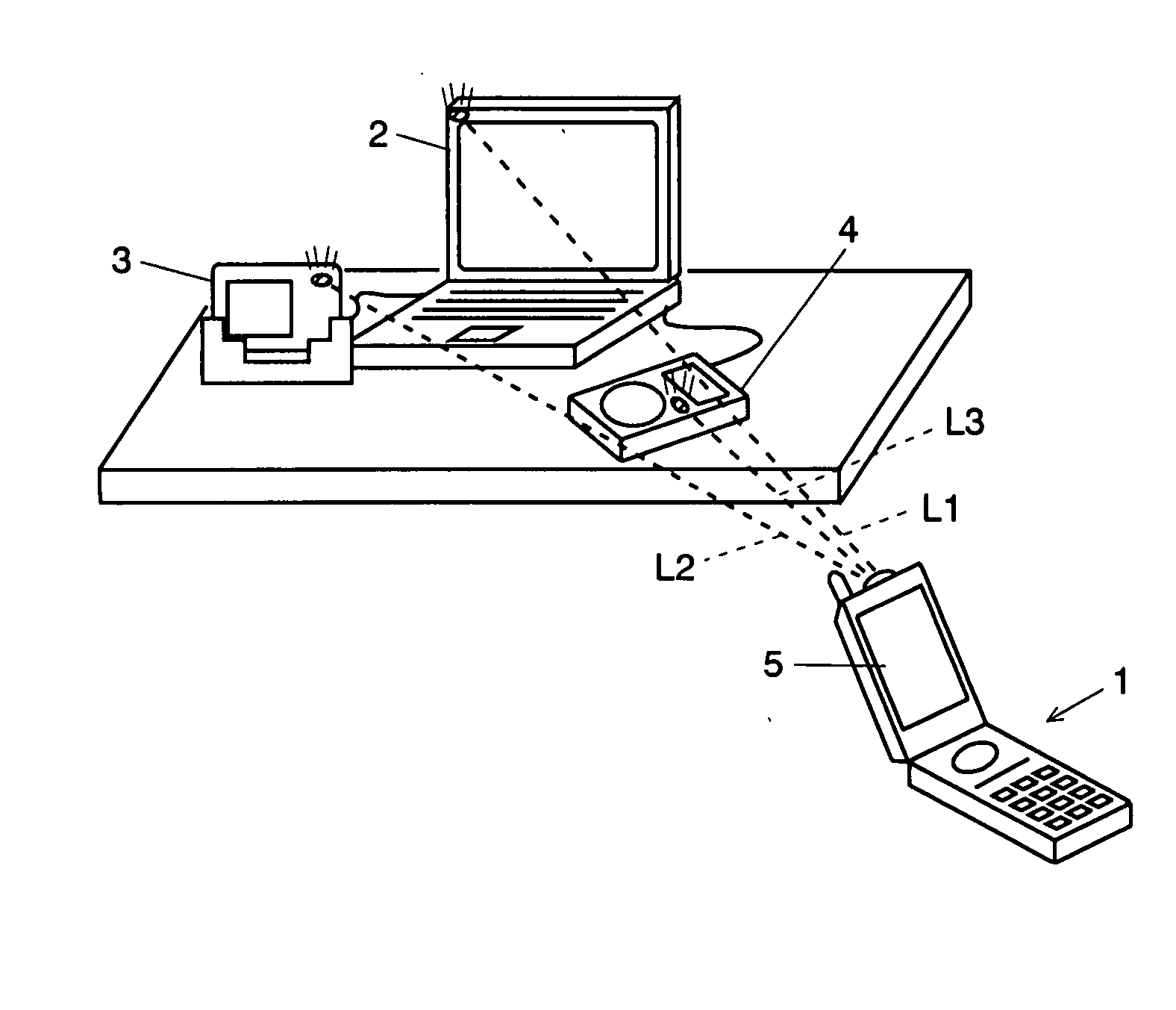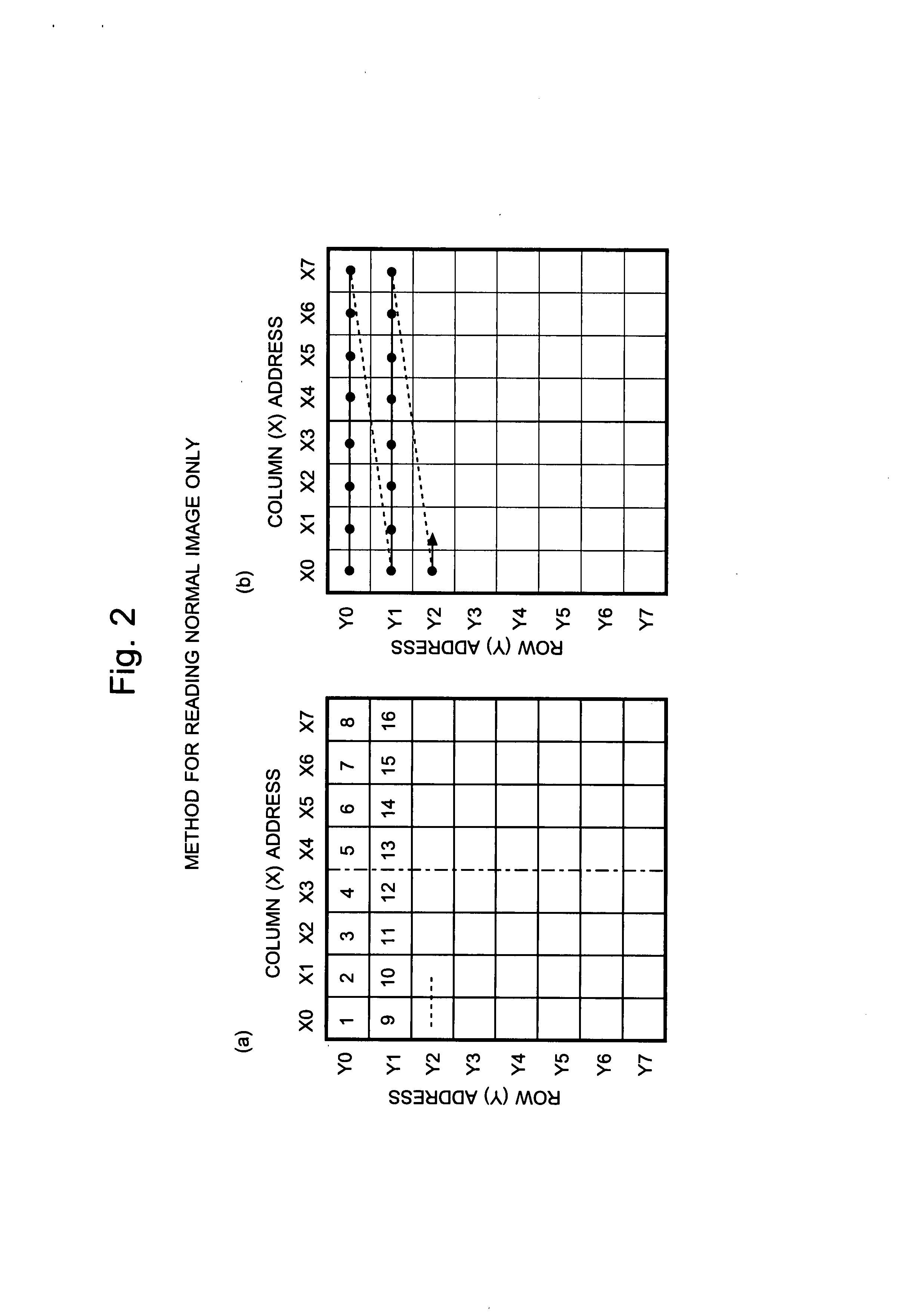Imaging Device and Method for Reading Signals From Such Device
- Summary
- Abstract
- Description
- Claims
- Application Information
AI Technical Summary
Benefits of technology
Problems solved by technology
Method used
Image
Examples
Embodiment Construction
[0052]An example of a free-space optical communication system using an imaging device according to the present invention is described with reference to the attached drawings.
[0053]FIG. 11 is a schematic view of the present free-space optical communication system. The information terminal 1, which is hand-held by a user (not shown), is a mobile phone capable of free-space optical communication. The personal computer 2, digital camera 3 and portable music player 4 are communication nodes capable of sending an ID signal (which corresponds to the identification information in the present invention) through an optical beacon to the information terminal 1. For example, this optical beacon can be created using a light-emitting diode for indicating the on / off state of an electronic device.
[0054]FIG. 13 is a graph showing the frequency spectrums of the signals contained in the light emitted from the optical beacon of each communication node. The pilot signal is a signal that blinks (or chang...
PUM
 Login to View More
Login to View More Abstract
Description
Claims
Application Information
 Login to View More
Login to View More - R&D
- Intellectual Property
- Life Sciences
- Materials
- Tech Scout
- Unparalleled Data Quality
- Higher Quality Content
- 60% Fewer Hallucinations
Browse by: Latest US Patents, China's latest patents, Technical Efficacy Thesaurus, Application Domain, Technology Topic, Popular Technical Reports.
© 2025 PatSnap. All rights reserved.Legal|Privacy policy|Modern Slavery Act Transparency Statement|Sitemap|About US| Contact US: help@patsnap.com



